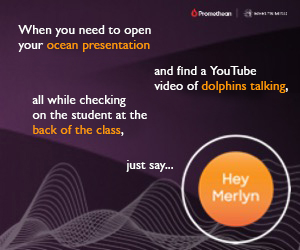STEM education is in crisis in the United States. It’s predicted there will be 3.5 million STEM jobs in the U.S. by 2025–incredible news if not for the fact experts believe at least 2 million of those jobs will go unfilled.
However, the excitement of our nation’s return to the moon could help resolve this. NASA’s Artemis mission just launched its first of three rockets after several months of delays. The goal is to ultimately return humans to the Moon, including the first woman and the first person of color, by 2025. It’s an exciting time for space exploration and perhaps the launch pad American educators and employers need to renew students’ interest in STEM education–and in turn, create a pipeline of new technical talent in the U.S.
The Artemis Mission can bring students within the ‘orbit’ of NASA, so that it’s tangible for them. This is an opportunity, not just for educators, but for our whole community to harness the excitement like our nation did with Apollo decades ago and remain competitive with STEM powerhouses, like China and India.
When Neil Armstrong famously stepped foot on the moon as part of the Apollo program, our nation saw an explosion in STEM degrees over the next decade, especially among women. According to an NPR study, in 1981 there was a 250 percent rise in computer science degrees and a 100 percent rise in physical sciences from when Apollo first launched in 1969. We’re hopeful that Artemis will have a similar effect. And with today’s ability to record/broadcast events instantly sharing with millions via social media, perhaps we can create a groundswell.
Representation matters
It’s been 54 years since the Apollo mission first took man to the Moon. This time around, we hope young kids of all backgrounds will see someone who looks like them, with NASA making it a priority to ensure the crew of Artemis includes more diversity.
Currently, Hispanic and Black professionals are underrepresented in the STEM workforce. Additionally, women only make up about a quarter of workers in computing and engineering fields. A statistic that is further observed when we look back at the NPR study. We see that by 2010 the number of women working in computer science dropped nearly as low as before the Apollo program began.
Related:
The ups and downs of girls in STEM
3 ways to teach STEAM in a blended learning environment
- SEO Powered Content & PR Distribution. Get Amplified Today.
- Platoblockchain. Web3 Metaverse Intelligence. Knowledge Amplified. Access Here.
- Source: https://www.eschoolnews.com/2022/12/09/nasas-latest-mission-can-fuel-stem-engagement/




